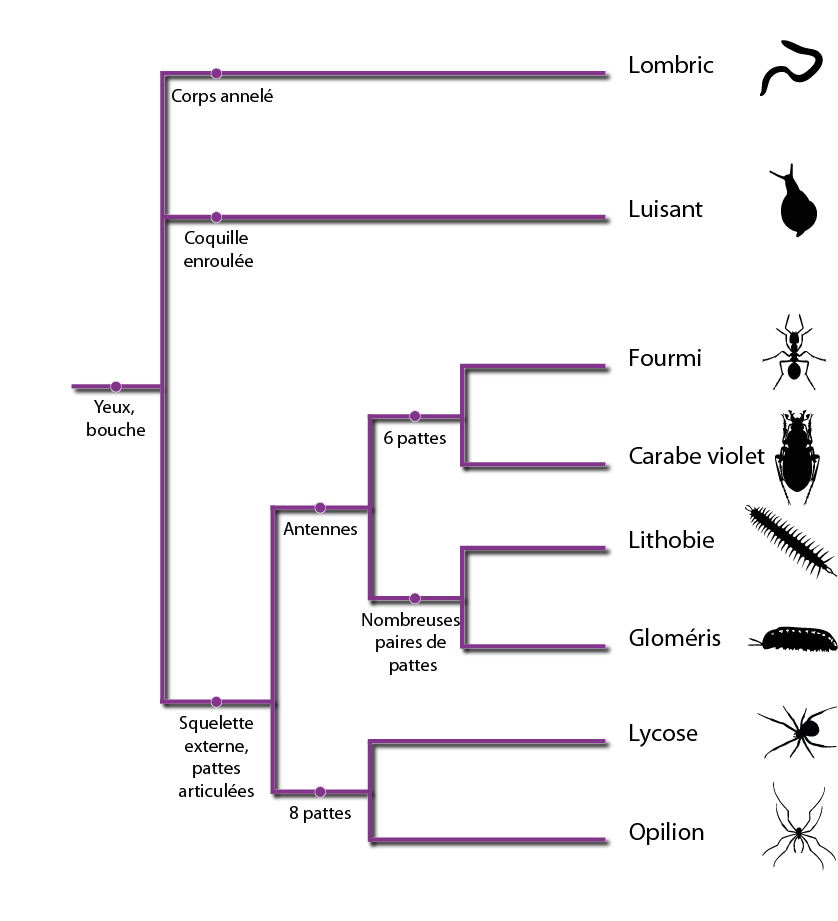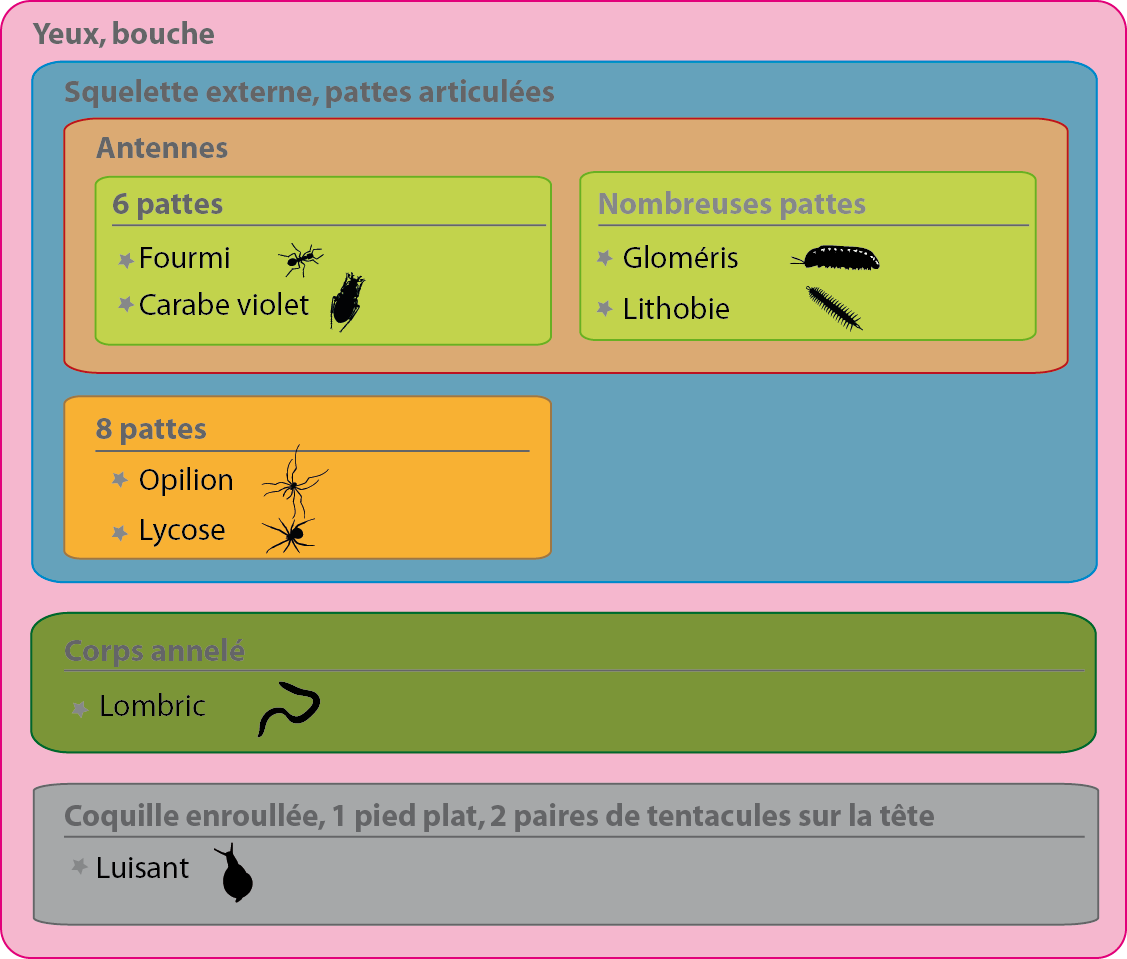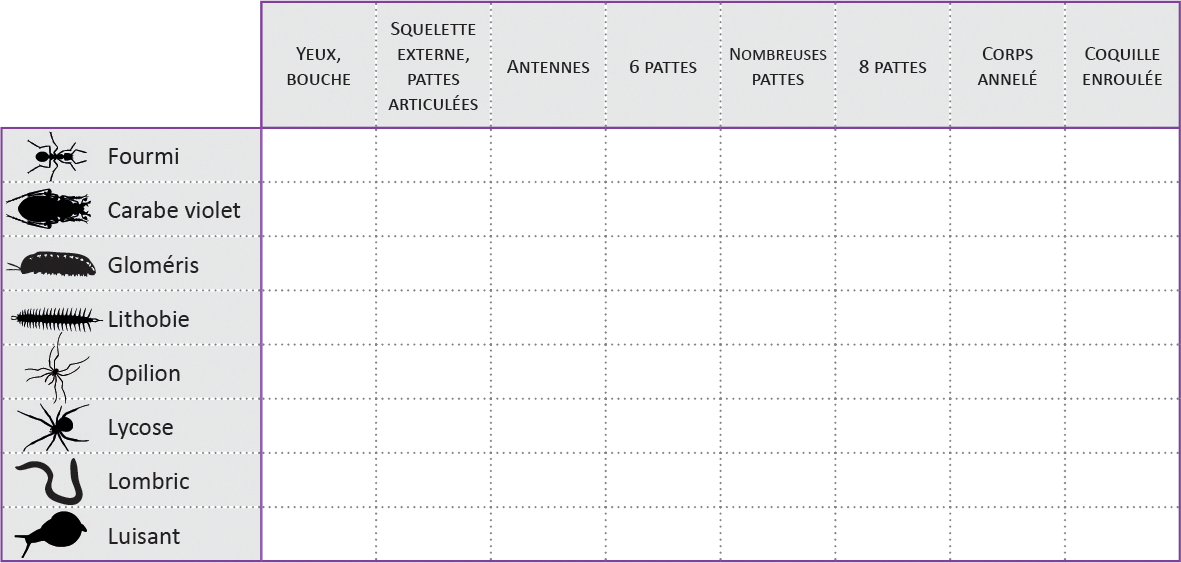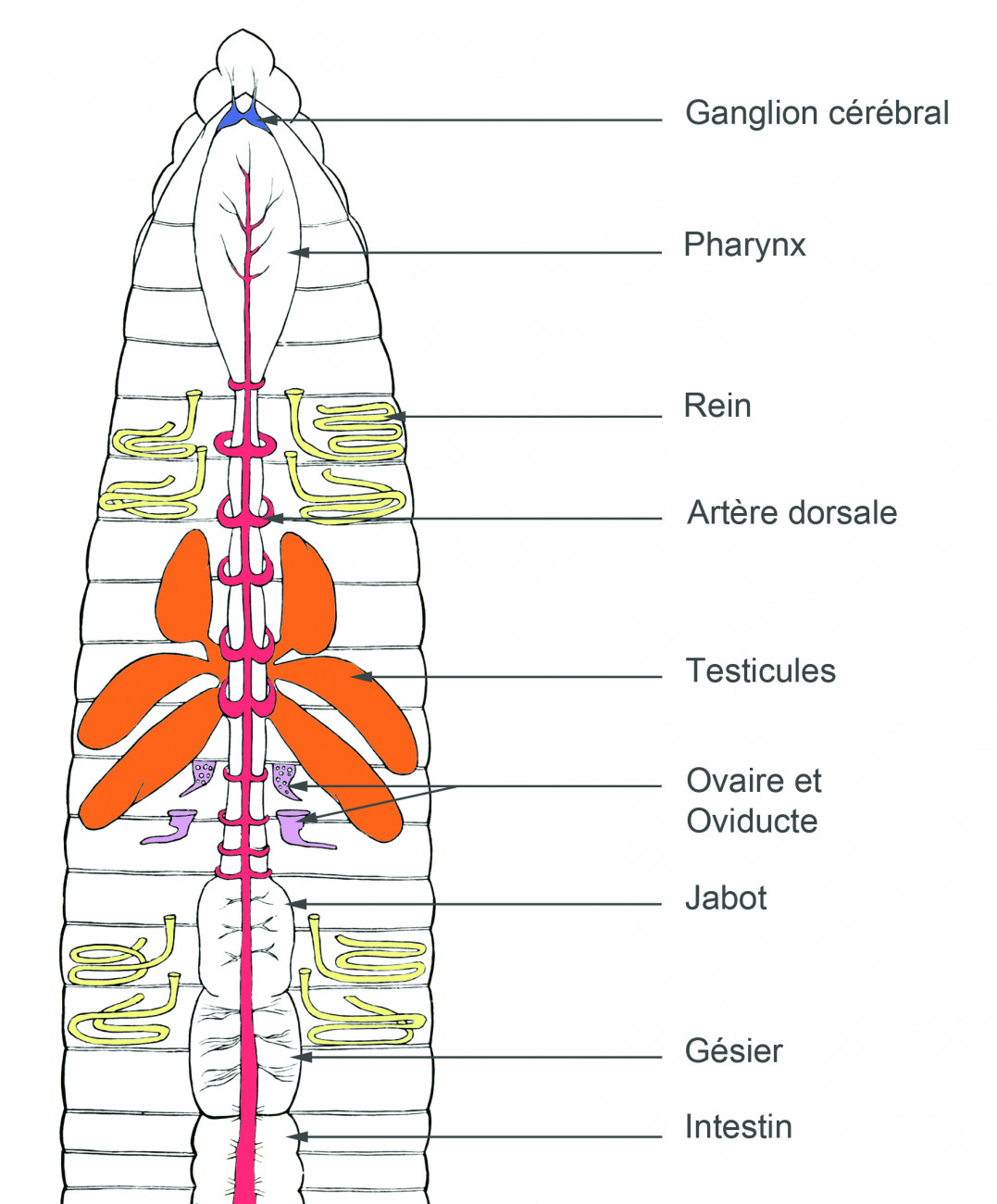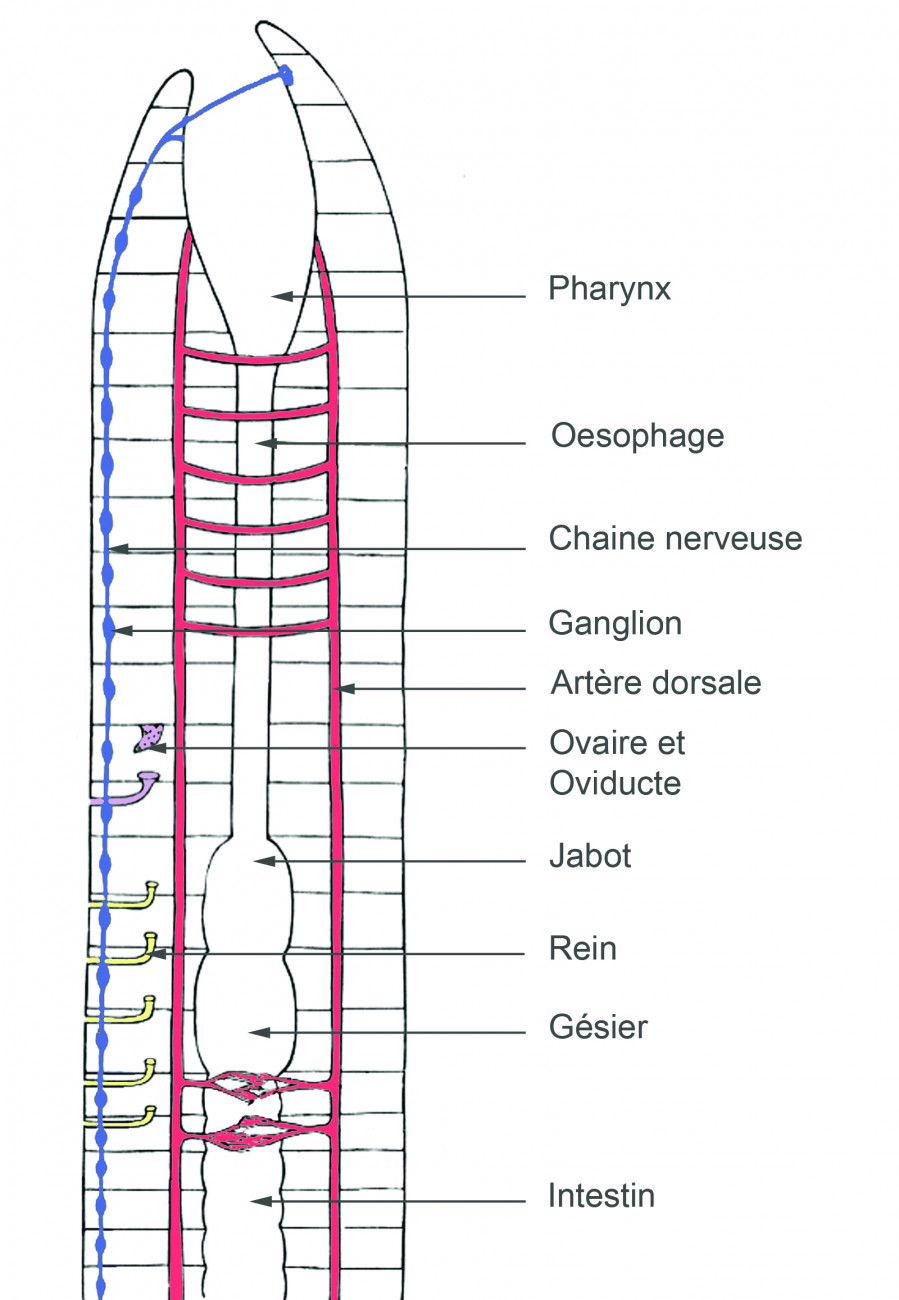Getting to know earthworms
Known to fishermen and farmers alike, the earthworm is a very special animal. Creeping like a snake and sluggish like a slug, where does the earthworm fit in the classification and what is its role in the ecosystem?
Some attributes of earthworms and classification
Earthworms have a soft body, segmented into numerous rings (up to 400 for French species!). This body segmented into rings allows earthworms to be classified in the group of annelids, like leeches and marine worms.
Each ring has 8 small bristles that allow the worm to move forward in the soil. When the worm reaches adulthood, a bulge called the clitellum develops on the first third of its body. This clitellum has a very important role in the reproduction of the worm.
It is from the above characters that we can construct this nested group diagram placing the position of earthworms within a collection of animals easily found in the early soil layers.
Soil engineers
The different species of earthworms can be classified into three main groups, depending on their way of life. Each of them will have a different role in the ecosystem:
-
Epigeous species: These worms live on the surface of the soil (in leaf litter, compost, manure etc.). They are small (< 5cm), agile and reddish-brown in colour (which protects them from UV light). They consume dead plant material found on the soil surface.
-
Endogeous species: These pale (pink, light grey, green) species dig horizontal (or almost horizontal) galleries. They feed on dead organic matter (e.g. dead root tips) and never consume living plant parts.
-
Anectic species: Anectic worms are large worms (> 10 cm) that dig almost vertical galleries with walls lined with their excrement. They move back and forth between the subsoil and the soil surface. These powerful species pull plant material from the soil surface (e.g. leaves) and bury it in their galleries. This is the group to which the common earthworm belongs, which is well known to fishermen.
General organisation of earthworms
Earthworms don't seem to make sense, yet there is a front end and a back end. While from the outside the worm's rings look identical, on the inside there are many organs and vessels necessary for its survival. The body is traversed by the digestive tract, the front beginning with the mouth and the back ending with the anus. All around are the organs necessary for digestive, reproductive, renal and arterial functions.
